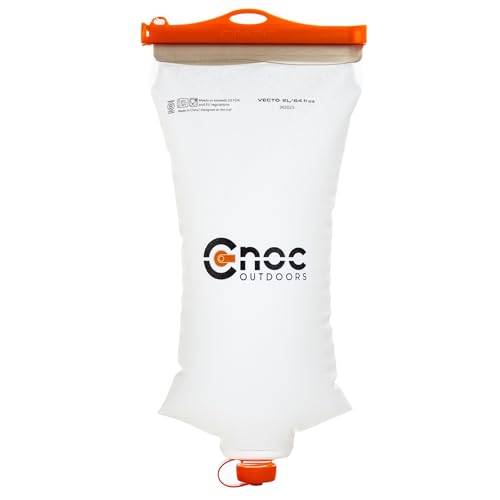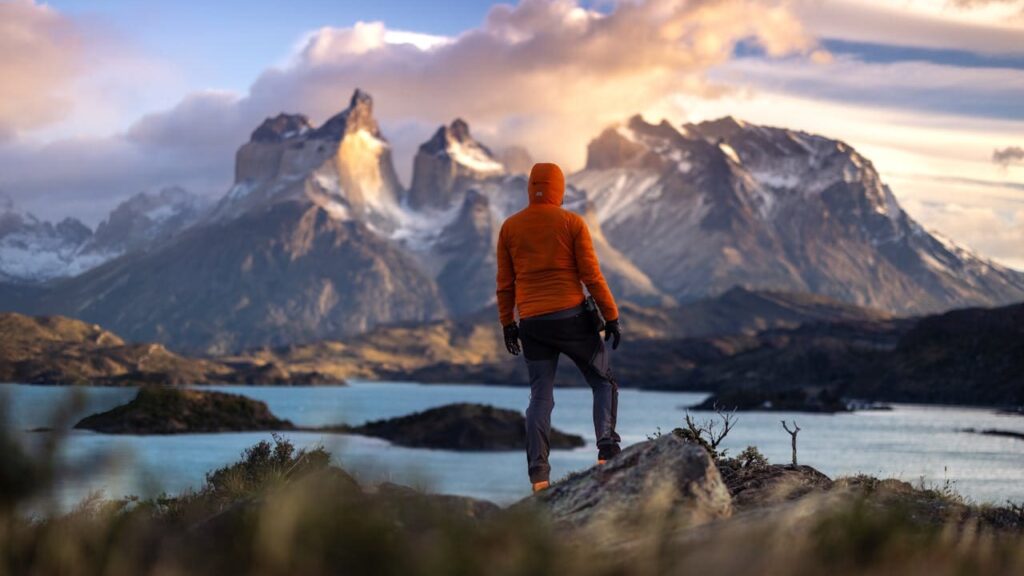Backpacking Base Weight: How to Find the Perfect Balance for Your Trips
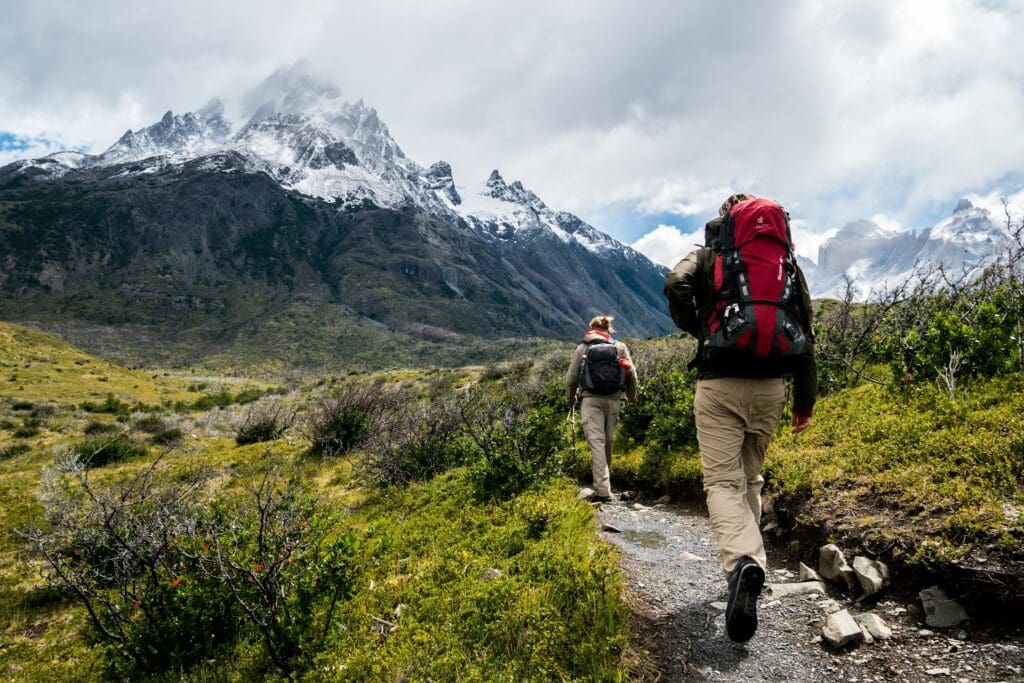
Nothing kills the joy of backpacking faster than an overloaded, back-breaking pack—or worse, a setup so minimal that you shiver through the night. Finding the right backpacking base weight is a game of balance. Do you cut every ounce for a lighter, faster hike? Or bring the comforts that make camp life enjoyable, even if it means carrying extra weight?
Whether you prefer the agility of a 10-pound ultralight setup or the added comfort of a 20+ pound pack, the right base weight is the one that makes your trip more enjoyable.
In this guide, we’ll break down:
✅ What backpacking base weight actually is (and why it matters)
✅ Ultralight vs. comfort backpacking—which one fits your style?
✅ The key factors that influence your ideal pack weight
✅ Gear recommendations for different styles of backpacking
✅ How to reduce your base weight without sacrificing too much comfort
Before we dive in, grab my Free Backpacking Gear Checklist—it’ll help you dial in your setup faster. Download it here.
Disclosure: This post contains affiliate links. As an Amazon Associate, I earn from qualifying purchases. I only recommend products I use and trust.
Let’s get started!
Understanding Backpacking Base Weight
If you’ve ever gone down the rabbit hole of ultralight backpacking forums, you’ve probably seen hikers obsess over their base weight—comparing spreadsheets, swapping gear to shave ounces, and debating whether a stove is even necessary. But what exactly is base weight, and why does it matter?
What Is Base Weight?
Your base weight is the total weight of everything in your pack except food, water, and fuel (a.k.a. consumables). Since these supplies vary from trip to trip, base weight gives you a consistent measurement of how heavy your pack is before adding the essentials.
Here’s a simple way to look at it:
- Base Weight = Everything in your pack minus food, water, and fuel.
- Total Pack Weight = Base weight plus food, water, and fuel.
For example, if your base weight is 15 lbs, and you’re carrying 5 lbs of food and 3 lbs of water, your total pack weight is 23 lbs.
The Spectrum: Ultralight vs. Comfort Backpacking
Not all backpackers aim for the same base weight. Some strip their gear down to the bare minimum, while others prioritize comfort—even if it means carrying extra pounds.

Here’s how different backpacking styles compare:
- Ultralight Backpacking: Base weight under 10 lbs.
- Prioritizes efficiency and speed.
- Uses high-tech, ultralight gear (often $$$).
- Requires experience and skill to stay safe with minimal equipment.
- Lightweight Backpacking: Base weight between 10-15 lbs.
- A balanced approach—some comforts, but still mindful of weight.
- Common choice for thru-hikers and experienced backpackers.
- Comfort Backpacking: Base weight 15+ lbs.
- Prioritizes better sleep, more convenience, and hot meals.
- Includes items like camp chairs, thicker sleeping pads, and extra layers.
Each style has its pros and cons. A lighter pack makes hiking easier, but sacrificing too much can make camp life miserable. On the flip side, a heavier pack means more comfort at camp—but also more strain on your body during the hike.
Most backpackers fall somewhere in the middle, fine-tuning their base weight over time based on experience, terrain, and personal preference.
Key Factors That Influence Your Base Weight
So, what’s the right base weight for you? It depends. There’s no magic number—only what works best for your trip, your body, and your personal comfort level. But a few key factors can help you figure out how light (or heavy) your pack should be.

Trip Duration & Destination
The length of your trip and where you’re heading play a huge role in how much gear you need.
- Short Trips (1-3 days): You can go lighter since you won’t need as much food or as many spare clothes.
- Longer Trips (4+ days): You might need more food, extra layers, and a more durable shelter—all of which add weight.
Destination matters, too:
- Well-traveled trails (like the AT, PCT, or JMT) mean easier resupply points, so you can carry less food and get by with a lighter setup.
- Remote routes (like the Wind River High Route or parts of Alaska) require more self-sufficiency, meaning you’ll need extra insulation, more food, and sometimes heavier gear for safety.
And don’t forget weather and terrain—a summer trip in the desert looks very different from a fall hike in the Rockies. Colder, wetter conditions require extra insulation, a warmer sleeping bag, and a more robust shelter—all of which increase base weight.
Personal Preferences & Experience Level
The more experience you have, the lighter you can often go. Seasoned backpackers know how to safely use minimal gear, while beginners might need a little extra backup gear for peace of mind.
Consider:
- How much comfort do you need? Can you sleep well on a thin foam pad, or do you need an inflatable mattress?
- Are you OK with minimalist meals? Or does a hot breakfast and fresh coffee make your trip 10x better?
- Do you feel safe with fewer backup items? If not, it’s OK to carry a bit more weight while you build confidence.
At the end of the day, your base weight should match your experience level and personal hiking style. You’ll refine it with every trip.
The Big Three: Pack, Shelter, and Sleep System
When it comes to backpacking, your choices in pack, shelter, and sleep system—often called the “Big Three”—are the biggest factors influencing both your base weight and comfort level. Choosing the right gear is all about balancing weight, durability, and how much comfort you actually need.
Backpack Selection: Lightweight vs. Supportive Packs

Your backpack is more than just a bag—it dictates how efficiently you carry your gear and how much weight you can comfortably handle.
- Ultralight Packs (Sub-2 lbs) – No frame, minimal padding, designed for sub-10 lb base weights.
- 🏕️ Best for: Fast-moving hikers who have already trimmed their base weight.
- Example: Zpacks Arc Haul Ultra 50 (Hyperlight Dyneema, ~1.3 lbs)
- Example: Hyperlite Mountain Gear 2400 Southwest (Dyneema, durable, ~1.9 lbs)
- 🏕️ Best for: Fast-moving hikers who have already trimmed their base weight.
- Lightweight Framed Packs (2-3 lbs) – Minimalist but still supportive, good for 10-15 lb base weights.
- Example: Osprey Exos 48 (Lightweight internal frame, ~2.6 lbs). [on Amazon]
- Example: Osprey Exos 48 (Lightweight internal frame, ~2.6 lbs). [on Amazon]
- Comfort-Oriented Framed Packs (3.5+ lbs) – More padding, better support for 15+ lb base weights.
- 🏕️ Best for: Hikers carrying bulkier gear, luxury items, or heavier food loads.
- Example: Gregory Baltoro 65 (Well-padded, carries 40+ lbs easily, ~4.8 lbs) [on Amazon]
- 🏕️ Best for: Hikers carrying bulkier gear, luxury items, or heavier food loads.
Ultralight vs. Comfort Takeaway:
A lighter pack makes hiking easier, but reduces carrying capacity and comfort. A framed pack adds weight but prevents back pain on longer trips.
Shelter Options: Ultralight vs. Comfort

Your shelter is one of the heaviest single pieces of gear in your pack, so choosing between ultralight vs. comfort options makes a big impact.
- 🏕️ Ultralight Shelters (Under 2 lbs) – These sacrifice space, durability, and ease of setup to cut weight.
- Trekking Pole Tents – Use your trekking poles instead of tent poles.
- Example: Zpacks Duplex (Dyneema, 1.3 lbs, roomy for ultralight)
- Tarps & Bivy Combos – Minimalist but require experience.
- Example: Outdoor Research Helium Bivy (under 1 lb) [on Amazon]
- Example: Outdoor Research Helium Bivy (under 1 lb) [on Amazon]
- Trekking Pole Tents – Use your trekking poles instead of tent poles.
- 🛌 Comfort-Oriented Tents (3-5 lbs) – More room, freestanding for easy setup, better weather protection.
- Example: Big Agnes Copper Spur HV UL2 (Ultralight but still roomy, ~3 lbs) [on Amazon]
- Example: NEMO Dagger (Comfort-first, double-wall protection, ~4 lbs) [on Amazon]
Ultralight vs. Comfort Takeaway:
Ultralight shelters save weight but demand more skill & compromise on space. Comfort tents are heavier but more protective, easier to set up, and feel like home.
Sleep System: Ultralight vs. Comfort
A good night’s sleep is non-negotiable, but ultralight vs. comfort decisions affect warmth, cushioning, and overall restfulness.
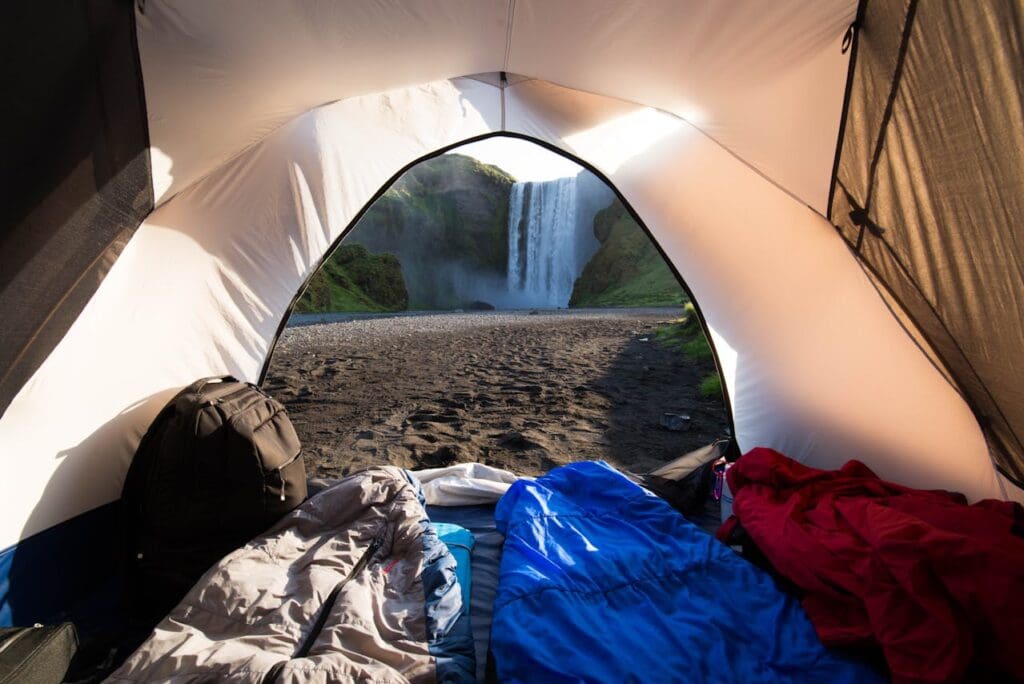
- 🏕️ Ultralight Sleep Systems (Sub-2 lbs total) – Prioritize lightweight and compressibility, but sacrifice comfort.
- Ultralight Quilts (1-1.5 lbs) – No zippers, no hood, lighter than sleeping bags.
- Example: Enlightened Equipment Revelation 20°F (Popular among ultralight hikers, ~1.2 lbs)
- Foam Sleeping Pads (~0.5 lbs) – Durable, lightweight, but not very cushy.
- Example: Therm-a-Rest Z Lite Sol (Reliable closed-cell foam pad, ~14 oz) [on Amazon]
- Example: Gossamer Gear Thinlight Foam Pad (Super minimal, 1/8″ thick, ~2.7 oz, great as a secondary pad or for extra insulation)
- Ultralight Quilts (1-1.5 lbs) – No zippers, no hood, lighter than sleeping bags.
- Lightweight and compact closed-cell foam camping mattress is a durable, dependable, and economical option for sleeping on the ground
- Trusted by mountaineers and backpackers for generations, the classic pad features folding accordion-style construction that is compact and easily packable
- Reflective ThermaCapture coating and heat-trapping dimples capture radiant heat, increasing overall warmth by 20 percent for an extra cozy night’s sleep (R-Value 2.0)
- Sleeping pad foam is softer on the top for comfort, and denser on the bottom for extra insulation, durability, and protection from the ground
- 🛌 Comfort-Oriented Sleep Systems (3+ lbs total) – Warmer, roomier, and cushier, but heavier.
- Sleeping Bags (2-3 lbs) – Fully enclosed, warmer, but bulkier.
- Example: Western Mountaineering UltraLite 20°F (High warmth-to-weight, ~1.8 lbs)
- Thicker Inflatable Pads (1-2 lbs) – More cushion, better insulation.
- Example: NEMO Tensor Insulated (One of the most comfortable ultralight pads, ~1 lb)
- Sleeping Bags (2-3 lbs) – Fully enclosed, warmer, but bulkier.
- 20° F temperature rating and 5IN loft
- Made with very breathable and weather resistant 20 denier shell fabric and filled with 16 ounces of 850 plus fill power goose down
- Full-length #5 YKK zipper with an insulated draft tube and a full down collar to keep the warmth in
- 5 1/4IN spacing/continuous baffles which encircle the bag from zipper to zipper and allow you to shift the down insulation to fit your ideal temperature
Ultralight vs. Comfort Takeaway:
Ultralight sleep systems cut weight but can be less warm & comfortable. Comfort setups offer better sleep but add weight—which is worth it if you struggle with rest on the trail.
Clothing: Striking the Right Balance

When it comes to backpacking clothing, the balance between weight and comfort plays a major role in your overall experience. Ultralight hikers prioritize minimalism—every ounce counts—while comfort-focused backpackers bring extra layers for warmth, versatility, and peace of mind. The right approach depends on your priorities and the conditions you’ll face.
Layering for Versatility: Ultralight vs. Comfort Approaches
A solid layering system is crucial for temperature regulation, but ultralight and comfort backpackers approach this differently.
🟢 Ultralight Backpacking:
- Prioritizes multi-use clothing to reduce the number of layers carried.
- Uses thin, fast-drying materials like merino wool and ultralight synthetics.
- Often skips a mid-layer entirely, relying on an insulated vest or a down jacket.
- Example setup:
- Base layer: Smartwool Merino 150 Tee (~4 oz) [on Amazon]
- Insulation: Mountain Hardwear Ghost Whisperer 2 Jacket (~8 oz) [on Amazon]
- Shell: Outdoor Research Helium Rain Jacket (~6 oz) [on Amazon]
- Ultra-lightweight ripstop fabric
- 800-fill RDS-certified down insulation Certified by Control Union. License Number: CU 848416
- First baffle at both cuffs is filled with synthetic insulation to prevent cuffs from wetting out
- Insulated hood with rear cinch with elastic binding to seal in warmth
🟢 Comfort Backpacking:
- Brings warmer, more durable layers, sometimes adding a fleece for extra insulation.
- Prefers looser-fitting clothing for breathability and comfort at camp.
- More likely to pack redundant layers for varied conditions.
- Example setup:
- Base layer: Patagonia Capilene Midweight Crew (~6 oz)
- Mid-layer: Arc’teryx Covert Fleece (~12 oz) [on Amazon]
- Shell: The North Face Antora Rain Jacket (~12 oz) [on Amazon]
- FACE THE WEATHER. The Men’s Antora Jacket is a modern silhouette inspired by our iconic Mountain…
- WATERPROOF FABRIC. Made with DryVent performance tech, this waterproof, windproof and breathable…
- STANDARD FIT. With a flattering shape and ample mobility through the chest and shoulders, this…
- OUTDOOR VERSATILITY. Never Stop Exploring with thoughtful features that help you go further — an…
💡 Takeaway: Ultralight backpackers strip down their wardrobe to the essentials, while comfort-focused hikers don’t mind a few extra ounces for warmth and versatility.
Footwear: Ultralight vs. Comfort

Your footwear choice dramatically affects your hiking experience. Here’s how ultralight and comfort backpackers differ:
👣 Ultralight Backpacking:
- Prioritizes trail runners over boots to cut weight and reduce fatigue.
- Prefers breathable, quick-drying shoes instead of waterproof options.
- Assumes lighter packs = less need for ankle support.
- Example: Altra Lone Peak 8 (~10 oz per shoe) [on Amazon]
- Stay Focused: With our MaxTrac outsole and multi-directional TrailClaw lug pattern for grippy traction, you can focus on the trail infront of you
- Reimagining Legendary: With a refined upper for durability, a grippy outsole, and a roomy toe box you’ll be ready to bag larger-than-life trail adventures
🥾 Comfort Backpacking:
- Often opts for sturdier, well-cushioned hiking boots.
- Prioritizes ankle support, especially on rugged terrain.
- Tends to favor waterproof membranes like Gore-Tex for wet conditions.
- Example: Salomon Quest 4 GTX Hiking Boots (~22 oz per boot) [on Amazon]
💡 Takeaway: Ultralight hikers prefer lightweight, breathable shoes for speed and efficiency, while comfort hikers lean toward support and protection, even if it means carrying more weight.
Accessories & Extras: The Small Essentials That Add Up

While the “Big Three”—your pack, shelter, and sleep system—make up the bulk of your base weight, the small accessories you carry can quietly add pounds if you’re not careful. Whether you’re aiming for an ultralight setup or prioritizing comfort, every ounce matters. Here’s how to make smart choices with the extras.
Navigation Tools: Maps, Compasses, and GPS Devices
- Ultralight Approach: Skip the bulky paper maps and go digital. Smartphone apps like Gaia GPS or FarOut (Guthook) work well for most trails. Pair it with a small backup compass.
▶️ Best Pick: Suunto Clipper Compass (~0.4 oz) [on Amazon] - Comfort Approach: Prefer a dedicated GPS device with detailed maps and a long battery life? A Garmin GPS satellite device is a reliable choice, especially for off-trail routes.
▶️ Best Pick: Garmin inReach Mini (~3.5 oz) [on Amazon]
- Micro Compass: This super compact compass easily attaches to your sleeve, watch strap, backpack strap, or map edge so you can free up your hands; It’s also great for underwater navigation
- Compact, lightweight satellite communicator enables two-way messaging and interactive SOS globally (Active satellite subscription required. Some jurisdictions regulate or prohibit the use of satellite…
Hydration Systems: Bottles vs. Bladders
- Ultralight Approach: Carry Smartwater bottles (cheap, lightweight, and durable) or collapsible options.
▶️ Best Pick: CNOC Vecto 2L (~2.6 oz) [on Amazon] - Comfort Approach: Prefer hands-free drinking? A hydration bladder lets you sip without stopping, but it adds weight and requires more cleaning.
▶️ Best Pick: Platypus Big Zip EVO 3L (~6 oz) [on Amazon]
- The Vecto’s features include a dual opening design – slider sealed wide opening and standard 28mm soda bottle-style screw neck. The 28mm Vecto attaches to filters with a 28 mm thread, such as the…
- Premium taste-free, leak-proof reservoir with fast flow rate offers hydration on the go for hikers, backpackers, travelers and mountain bikers
Cooking Gear: Stoves, Pots, and Utensils
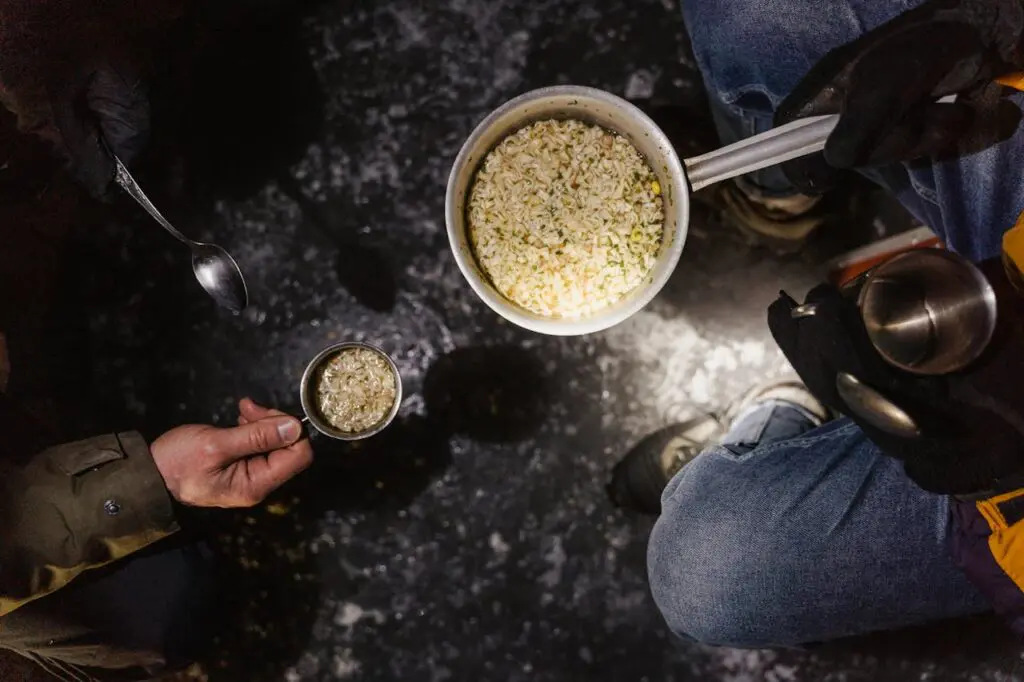
- Ultralight Approach: Go with a simple alcohol stove or cold soak your meals to avoid carrying a stove altogether.
▶️ Best Pick: BRS Ultralight Stove (~1.4 oz) [on Amazon]
▶️ Best Pick: Evernew Alcohol Stove (~1.6 oz) [on Amazon]
▶️ Best Pick: TOAKS Titanium 550ml Pot (~3 oz) [on Amazon] - Comfort Approach: Prefer hot coffee and real meals? A canister stove with simmer control makes cooking easier.
▶️ Best Pick: Jetboil MiniMo (~14 oz) [on Amazon]
- Powered by FluxRing technology, the MiniMo camping and backpacking stove cooking system, in Carbon, reaches a rolling boil in just over two minutes with half the fuel consumption of traditional…
- Material: Titanium Capacity: 19.4oz (550ml)
- Weight: Pot with lid 2.6 oz (72g) Pot only: 1.9 oz (54g)
Lighting: Headlamps vs. Lanterns
- Ultralight Approach: Choose a USB-rechargeable headlamp to cut down on extra batteries.
▶️ Best Pick: Nitecore NU25 (~1.6 oz) [on Amazon] - Comfort Approach: Want brighter light or a camp lantern for a cozy setup? Some hikers carry both a headlamp and a lantern.
▶️ Best Pick: Black Diamond Spot 400-R (~3 oz) Comfort Approach: Want brighter light or a camp lantern for a cozy setup? Some hikers carry both a headlamp and a lantern [on Amazon]
- BRIGHT LIGHTWEIGHT HEADLAMP- the NU25 headlamp is capable of a 400 lumen max, Instead of traditional headband, it comes with a pair of paracord, which make NU25 even more lightweight, perfect for…
- TRIPLE OUTPUT VERSATILITY – a combined spotlight and floodlight mode, spotlight mode, floodlight mode, and dual auxiliary red LEDs for variety usage scenarios.
- Utah based Black Diamond has been producing premium quality outdoor equipment since 1957. All Black Diamond Headlamps Include a 3 Year Warranty.
- Rechargeable: Powered with integrated 1500 mAh Li-ion battery with micro-USB charge port
- 400 Lumen max output
First Aid and Repair Kits
- Ultralight Approach: Carry a barebones first aid kit, just enough to handle common injuries.
▶️ Best Pick: Adventure Medical Kits Ultralight .3 (~2 oz) [on Amazon] - Comfort Approach: A more comprehensive first aid kit includes extra bandages, medications, and blister treatments.
▶️ Best Pick: Adventure Medical Kits Ultralight .7 (~5 oz) [on Amazon] - Repair Kit Bonus: A small gear repair kit can save your trip if something breaks.
▶️ Best Pick: Gear Aid Tenacious Tape + Repair Kit (~1.5 oz) [on Amazon]
Luxury Items: Worth the Weight?
- Ultralight Approach: Stick to one or two small comfort items, like a sit pad or earplugs for sleeping.
▶️ Best Pick: Therm-a-Rest Z-Seat (~2 oz) [on Amazon]
- Durable, superlight (2 ounces) closed-cell foam portable camping seat for insulation and on-the-spot comfort on rough terrain
- Ideal for hiking, backpacking, trekking, snowshoeing, and ski touring; also great for stadiums and bleachers, or for Concert and festival seating
- Puncture-proof closed-cell foam is virtually indestructible; included bungee cord keeps seat compact for transport
- Comfort Approach: If weight isn’t an issue, go all-in on comfort with a camp chair and inflatable pillow.
▶️ Best Picks:- Chair: Helinox Chair Zero (~1.1 lbs) [on Amazon]
- Pillow: Sea to Summit Aeros Premium (~2.5 oz) [on Amazon]
- A larger, stronger verison of the Chair Zero, built to support more weight; capacity is 320 pounds, and chair weighs just 1.4 pounds, with a packed size of 14 x 4.5 x 4 inches
- Ultralight, shock-corded chair frame is constructed from advanced DAC aluminum alloy to provide maximum strength at a minimum weight

🔥 Next Up: Now that we’ve covered all the key gear choices, let’s break down the best ultralight and comfort gear picks in one easy list!
The 10 Best Ultralight Backpacking Gear Picks
When it comes to ultralight backpacking, every single item in your pack earns its place. The goal is to cut weight without sacrificing safety or functionality—which means choosing high-quality, well-tested gear that delivers the best weight-to-performance ratio.
These 10 ultralight picks represent the best in class, from trusted brands with proven reliability on the trail.
Ultralight Must-Haves
🔹 Backpack: Hyperlite Mountain Gear Southwest
🔹 Shelter: Zpacks Duplex Tent
🔹 Sleeping Quilt: Enlightened Equipment Revelation 20°F
🔹 Sleeping Pad: Therm-a-Rest NeoAir XLite NXT [on Amazon]
🔹 Trail Runners: Altra Lone Peak 8 [on Amazon]
🔹 Down Jacket: Mountain Hardwear Ghost Whisperer 2 [on Amazon]
🔹 Rain Jacket: Outdoor Research Helium [on Amazon]
🔹 Cook System: TOAKS Titanium 550ml Pot + BRS Stove [on Amazon]
🔹 Water Filter: Sawyer Squeeze [on Amazon]
🔹 First Aid Kit: Adventure Medical Kits Ultralight .3 [on Amazon]
💡 Why These?
This list is built around the best weight-to-performance gear used by thru-hikers and serious backpackers. The Zpacks Duplex is a gold standard for ultralight tents, while the HMG 2400 Southwest offers the durability of Dyneema without excess weight. The Ghost Whisperer 2 and NeoAir XLite round out a core system that keeps pack weight down without sacrificing warmth or comfort.
Comfort-Oriented Must-Haves
🔸 Backpack: Osprey Atmos AG 65 [on Amazon]
🔸 Shelter: Big Agnes Copper Spur HV UL2 [on Amazon]
🔸 Sleeping Bag: Western Mountaineering UltraLite 20°F [on Amazon]
🔸 Sleeping Pad: NEMO Tensor Insulated [on Amazon]
🔸 Hiking Boots: Salomon Quest 4 GTX [on Amazon]
🔸 Down Jacket: MARMOT Down Jacket [on Amazon]
🔸 Rain Jacket: The North Face Antora [on Amazon]
🔸 Cook System: Jetboil MiniMo Cooking System [on Amazon]
🔸 Camp Chair: Helinox Chair Zero [on Amazon]
🔸 Luxury Item: Sea to Summit Aeros Premium Pillow [on Amazon]
💡 Why These?
This list is designed for maximum comfort without worrying about every ounce. The Osprey Atmos AG 65 and Big Agnes Copper Spur offer support and space, while the NEMO Tensor and Western Mountaineering UltraLite ensure better sleep in the backcountry. The Jetboil Flash and Helinox Chair Zero are perfect for hikers who love a warm meal and a real seat at camp.
Conclusion & Final Thoughts
So, what’s the right backpacking base weight? The truth is, there isn’t one. Whether you aim for a sub-10 lb ultralight setup or don’t mind hauling 20+ lbs for a better night’s sleep, the best pack weight is the one that lets you enjoy the trail.

If you’re new to backpacking, start somewhere in the 10-15 lb range—light enough to be manageable, but not so stripped-down that you sacrifice safety and comfort. As you gain experience, you’ll naturally refine your gear list, cutting unnecessary weight or adding back items that make your trips more enjoyable.
How to Dial in Your Base Weight
✅ Go on a shakedown hike – Test your setup on a short trip before committing to big miles.
✅ Weigh every piece of gear – If you don’t know what it weighs, you can’t optimize it.
✅ Cut redundant or unused items – If you don’t use it, ditch it.
✅ Upgrade strategically – Lighter gear is great, but only if it actually improves your experience.
✅ Find your balance – Some hikers are happiest at 8 lbs, others at 18 lbs—both are valid!
At the end of the day, it’s your pack, your hike, your call.
🔥 Want to see these principles in action? Watch my full YouTube breakdown here.
📩 Need a step-by-step gear checklist? Download my Free Backpacking Gear List here.
Join Our Community of Adventure Seekers!
Get the latest backpacking tips, gear guides, and trail inspiration sent directly to your inbox.
Sign up to start exploring!
Amazon and the Amazon logo are trademarks of Amazon.com, Inc. or its affiliates.












